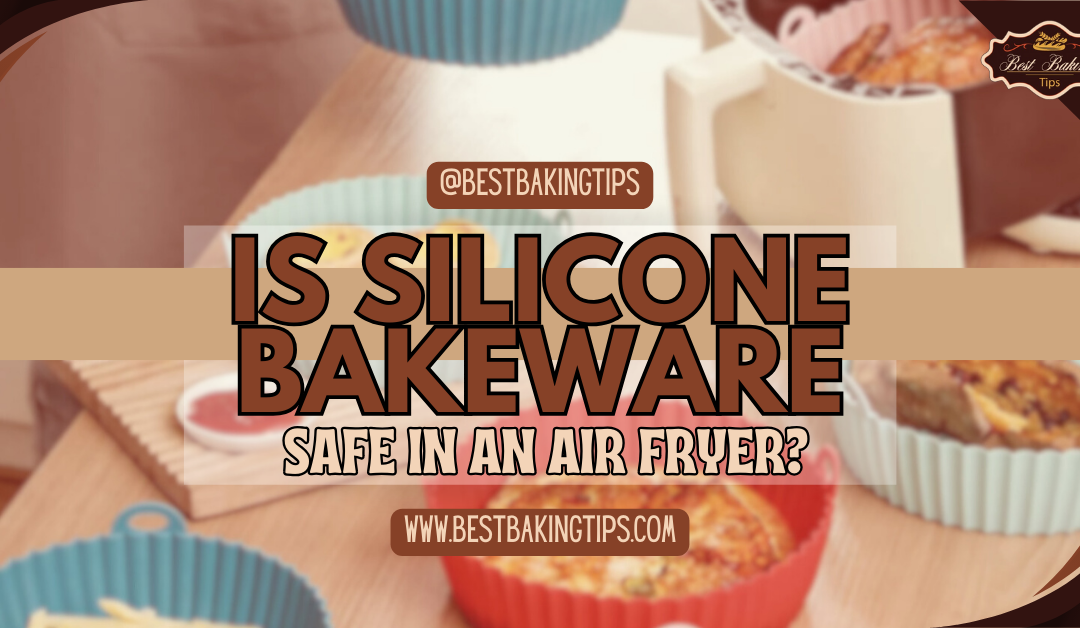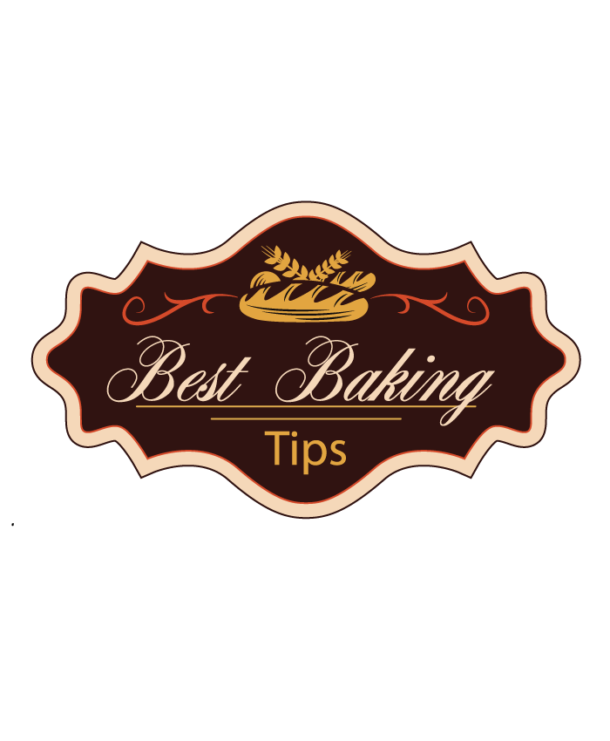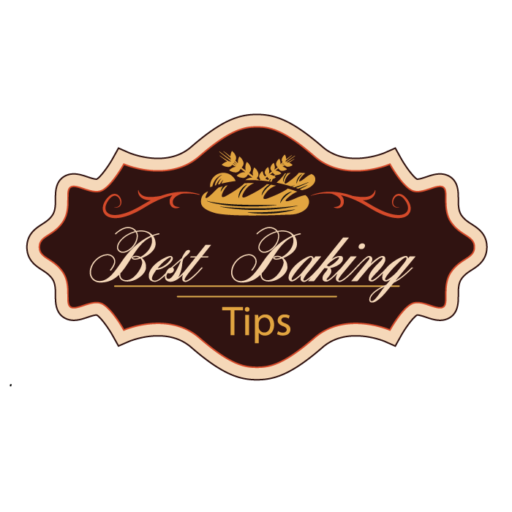==================
Affiliate Statement
Best Baking Tips is supported by our audience. When you purchase through one of our links, we may earn a small affiliate commission. As an Amazon Associate I earn from qualifying purchases. Your cost is not affected.
==================
Have you ever wondered if your trusty silicone bakeware could tag along with your air fryer adventures? With air fryers becoming the go-to for healthier cooking, it’s essential to know if our favorite bakeware can handle the heat. Silicone bakeware is known for its resilience, but is it really safe for air fryers? Join us as we dive into the world of silicone bakeware, uncovering its compatibility, safety, and why it might just be the perfect match for your air frying escapades.
Is Silicone Bakeware Safe in an Air Fryer? Understanding Heat Resistance and Material Safety
The question of silicone bakeware’s safety in air fryers is a relevant one for modern cooks looking to take advantage of this versatile cooking method.
Air fryers work by circulating hot air around the food, offering a healthier alternative to traditional deep-frying.
The unique cooking process posed by air fryers requires bakeware that can withstand the appliance’s high heat and circulating airflow.

Silicone bakeware is known for its durability and heat-resistant properties, making it a popular choice for conventional baking.
Its ability to withstand a wide range of temperatures has brought it to the forefront as an option for air fryer enthusiasts.
Understanding the thermal capabilities of silicone is crucial in utilizing it safely within the air fryer’s cooking chamber, where consistent heat distribution is key to achieving the desired cooking results.
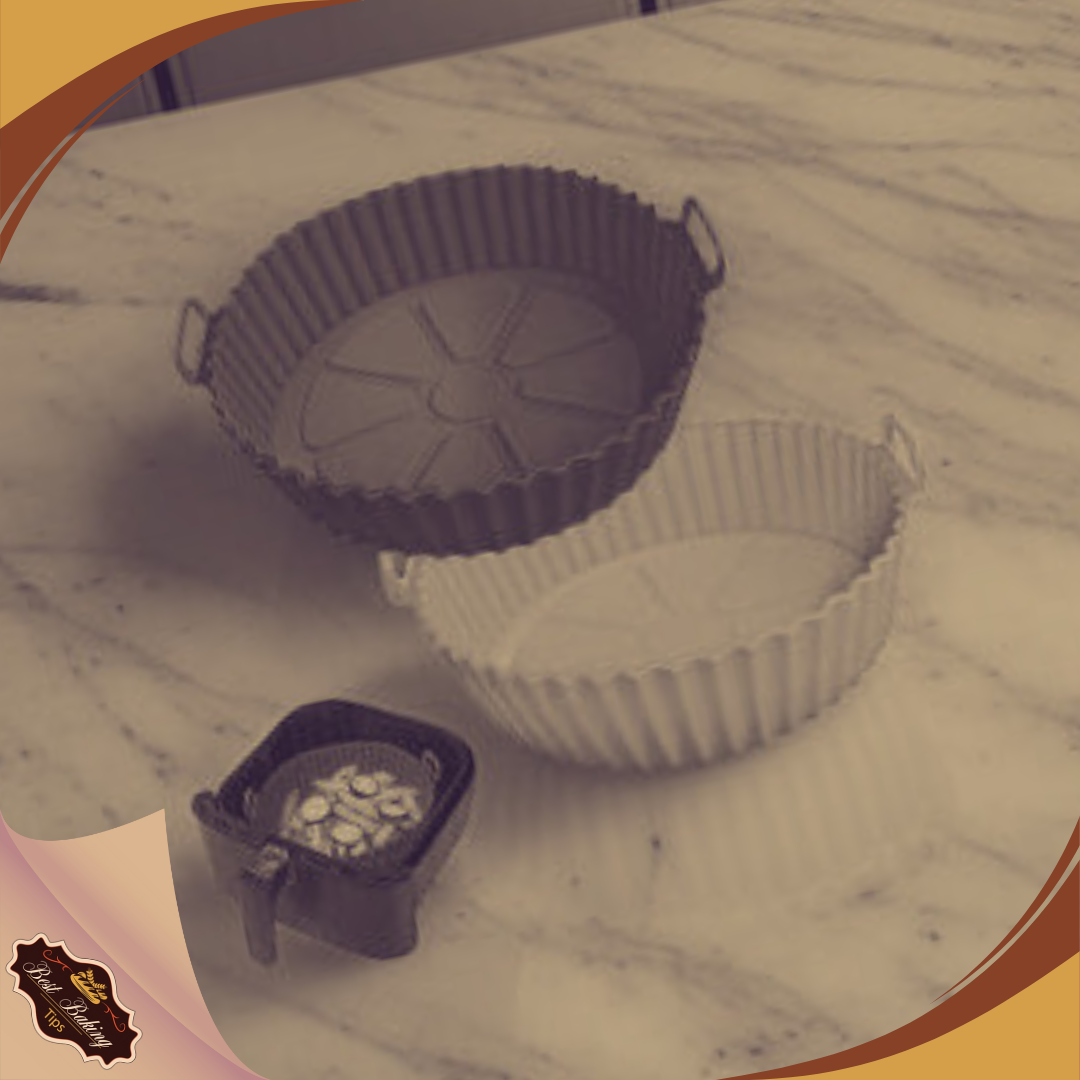
Key Takeaways
- Silicone bakeware is heat-resistant, which is necessary for the high-temperature environment of air fryers.
- Using silicone in air fryers can be beneficial due to its durability and ease of cleaning.
- It’s important to follow best practices for safety when using silicone bakeware in air fryers.
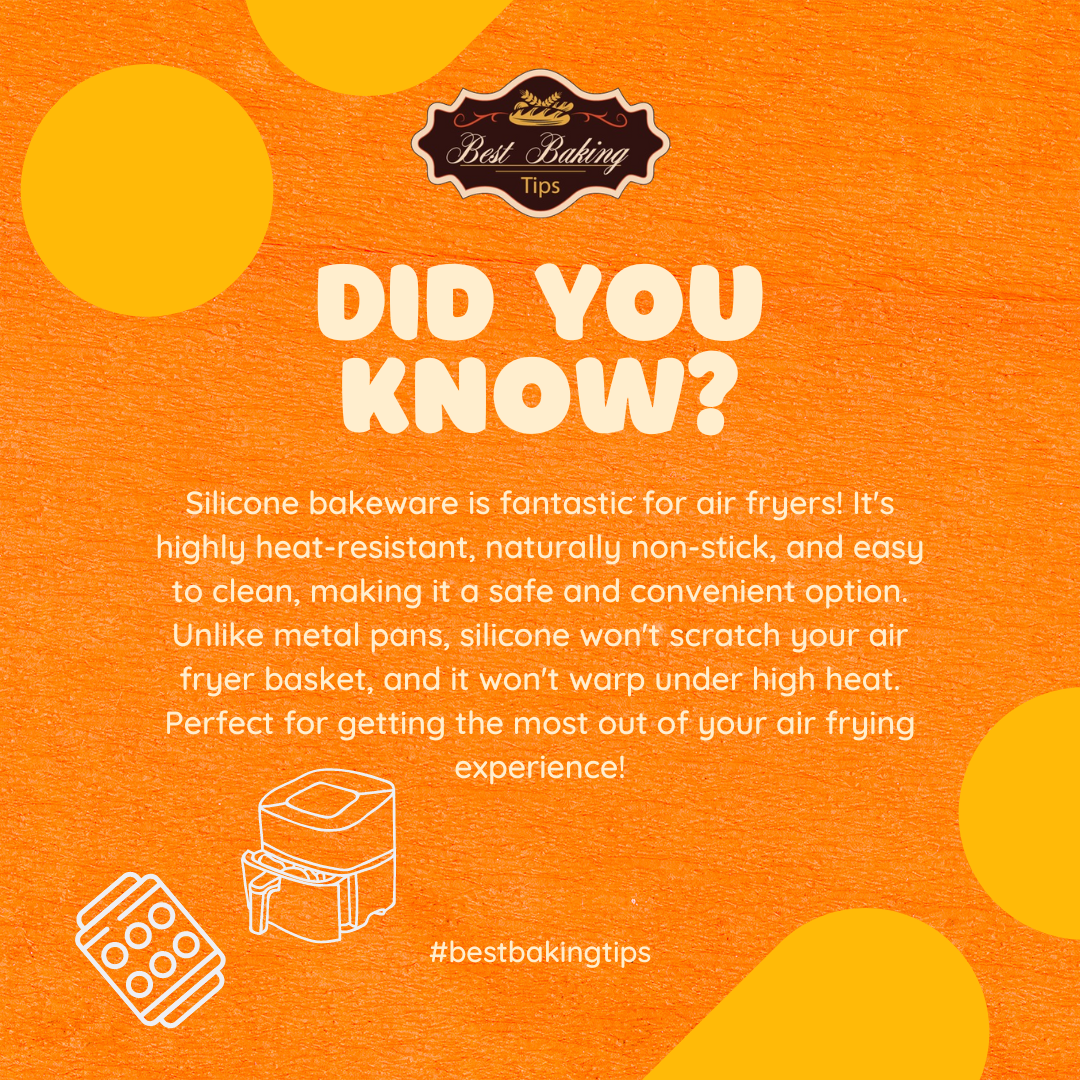
Overview of Silicone Bakeware
Silicone bakeware has become increasingly popular due to its flexible nature and non-stick qualities.
This type of bakeware is made primarily from silicone, a synthetic rubber that exhibits a wide range of properties favorable for cooking and baking.
One of the main advantages of silicone is its high heat resistance: It generally withstands temperatures from -40˚F to 500˚F, making it suitable for a diverse range of cooking methods.
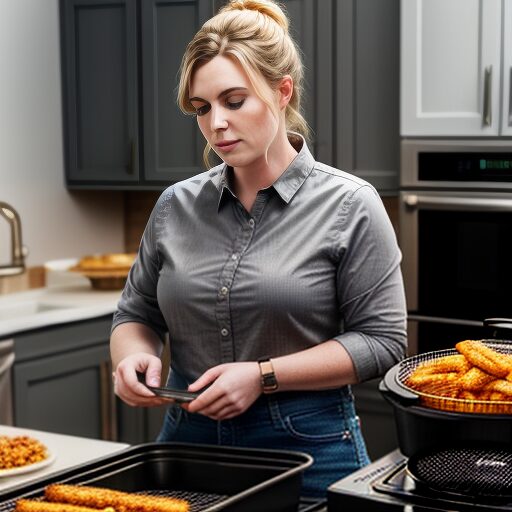
When considering silicone bakeware for use in an air fryer, there are several key points to take into account:
- Temperature Tolerance: Most quality silicone can handle the typical cooking temperatures of an air fryer, which rarely exceed 400˚F.
- Safety: It is BPA-free, non-toxic, and does not release harmful chemicals upon heating.
- Durability: Silicone molds are designed to be reusable, resisting wear and tear from both heat and cold.
- Ease of Cleaning: These implements are often dishwasher-safe and can be cleaned easily due to their non-stick nature.
Below is a summary of silicone bakeware’s compatibility with air fryers:
| Property | Compatibility with Air Fryer |
|---|---|
| Heat Resistance | Yes |
| Non-toxic | Yes |
| Flexible and Soft | Yes |
| Easy to Clean | Yes |
While they are highly versatile, users should ensure that their silicone bakeware does not block an air fryer’s air circulation, which can result in uneven cooking.
It is recommended to position silicone molds correctly to maximize the efficiency of an air fryer.
Proper use of silicone bakeware in an air fryer provides a safe and convenient way to prepare a variety of dishes.
Compatibility of Silicone Bakeware with Air Fryers
Silicone bakeware is generally suitable for use in air fryers due to its high heat resistance and durability. However, users must ensure that their silicone bakeware meets specific criteria to ensure safe and efficient cooking.
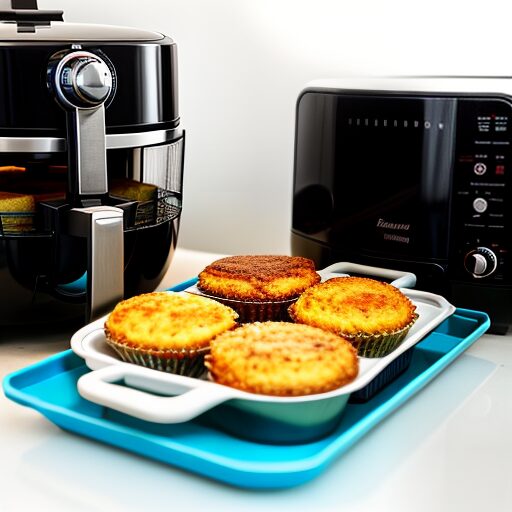
Temperature Threshold of Silicone Bakeware
Most silicone bakeware can withstand temperatures well above average air frying conditions, typically up to 450°F (230°C).
Silicone’s heat resistance means it won’t melt or release harmful chemicals during air frying.
However, it’s imperative to check the maximum temperature your specific bakeware can tolerate before use, as some air fryers can reach upwards of 500°F (260°C).
Size and Shape Considerations for Air Fryer Use
The size and shape of silicone bakeware should be compatible with the air fryer’s basket for optimal airflow.
Bakeware that is too large or shaped in a way that restricts the circulation of hot air can lead to uneven cooking.
Users should aim for adequate spacing around the bakeware to facilitate the forced air circulation that is key to air frying.
It is also worth noting that bakeware with a perforated design can enhance the crispiness of the food being cooked.
Benefits of Using Silicone Bakeware in Air Fryers
Silicone bakeware introduces a suite of advantages when used in air fryers. These benefits range from their non-stick properties to their durability and ease of cleaning, which can significantly enhance the air frying experience.
Non-Stick Qualities
Silicone bakeware’s non-stick surface ensures that foods release easily after cooking.
This attribute is particularly valuable in an air fryer as it prevents food from sticking to the basket, eliminating the need for additional oils or sprays to achieve a non-stick effect.
The result is healthier, evenly cooked meals with a satisfying texture.
Ease of Cleaning
The ease of cleaning is another compelling benefit of silicone bakeware.
Due to the smooth, non-porous surface of silicone, cleaning it often requires little more than a simple rinse and wipe.
When a deeper clean is necessary, silicone molds can safely be washed in soapy water or placed in a dishwasher, saving time and effort in the kitchen.
Durability
Silicone is known for its high temperature resistance and overall durability.
Unlike traditional bakeware that may dent or rust, silicone molds maintain their shape and integrity over a wide range of temperatures, typically up to 440℉.
This makes them a reliable choice for the intense heat circulation within an air fryer.
Their flexibility also means they’re less likely to break or crack, ensuring a longer lifespan and better value for consumers.
Safety Concerns
While silicone bakeware is popular due to its versatility and convenience, certain safety concerns should be considered when using it in an air fryer. These concerns predominantly revolve around the material’s chemical stability at high temperatures and its physical integrity under similar conditions.
Chemical Stability at High Temperatures
Silicone is a synthetic rubber known for its high heat resistance and non-reactive nature, making it a suitable material for cooking applications.
At high temperatures, which are typical in an air fryer, it’s imperative that the bakeware maintains its chemical structure without releasing any harmful substances.
Food-grade silicone is generally regarded as stable and safe, as it can typically withstand temperatures up to 450°F (230°C).
For air fryer use, one should verify that the silicone bakeware adheres to this heat resistance criterion to ensure that no harmful chemicals are leached into the food.
Potential for Melting and Warping
Silicone bakeware should not only be chemically stable but also physically durable.
Although unlikely, there is a potential for melting or warping if the silicone is exposed to temperatures beyond its threshold.
Misshapen bakeware could be a safety risk as it might come into contact with heating elements, posing a fire hazard.
Users need to confirm that their air fryer’s maximum temperature is within the silicone’s tolerance limit to prevent such issues.
It’s also worth noting that consistent use at high temperatures may gradually degrade the silicone, which might lead to deformation over time.
Best Practices for Using Silicone Bakeware in Air Fryers
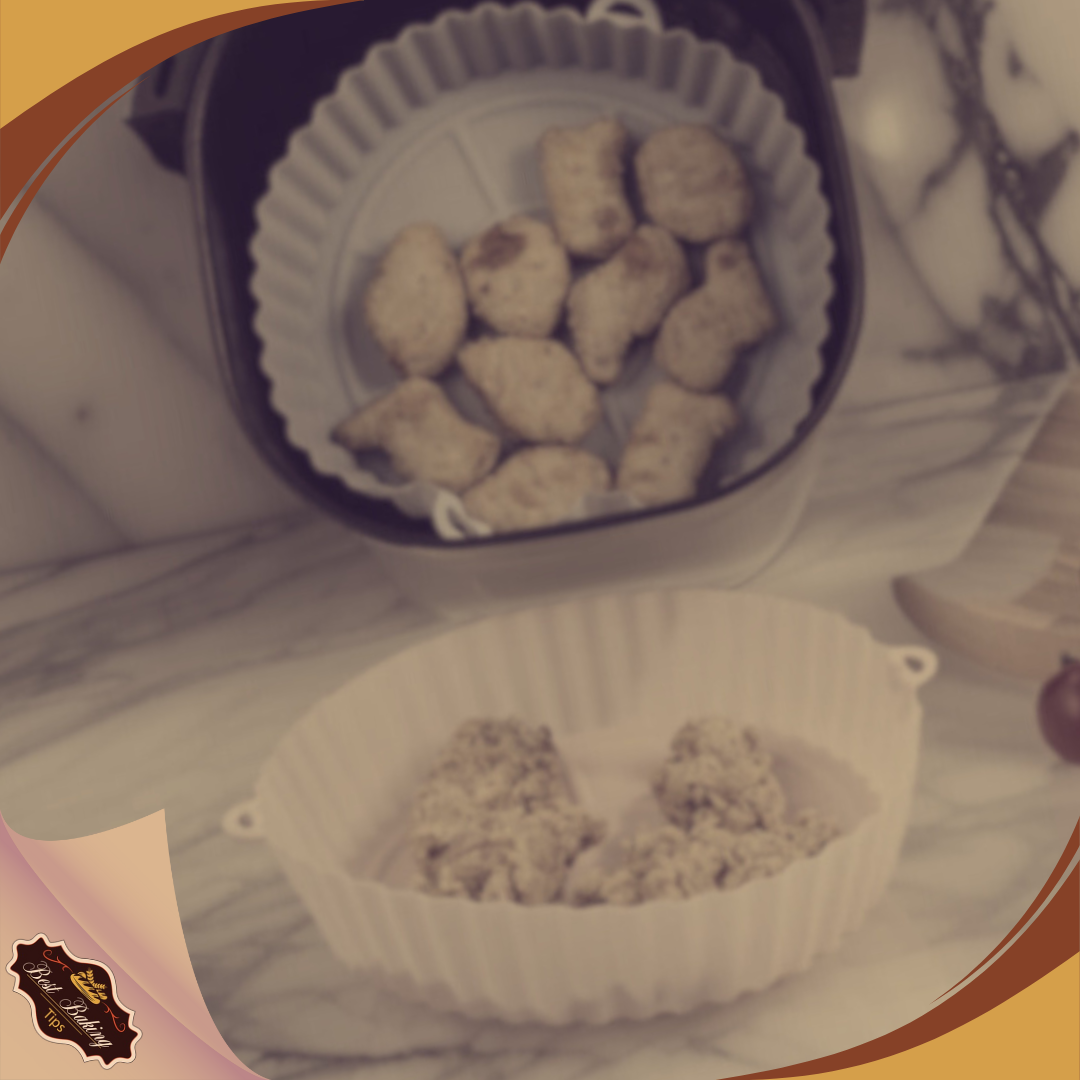
Preheating the Air Fryer
Before placing silicone bakeware in the air fryer, it is essential to preheat the unit to the desired temperature.
This ensures that food cooks evenly and prevents the silicone from experiencing a sudden temperature change which could affect its integrity.
A properly preheated environment also shortens cooking time and helps achieve a crispy exterior on baked goods.
Avoiding Overcrowding
To guarantee even air circulation, do not overcrowd the silicone bakeware with food.
Air fryers function by circulating hot air around the food, and too many items can hinder this flow, resulting in unevenly cooked food.
A good rule of thumb is to maintain a single layer with ample space around each item, allowing for the air to reach all surfaces effectively.
Monitoring Cooking Times
Because air fryers cook food at a faster rate than conventional ovens, it is important to adjust cooking times accordingly.
Use a timer and keep a close eye on the food, especially towards the end of the recommended cooking time to prevent burning or overcooking.
It is better to check the food’s progress periodically and adjust the time as needed based on the specific air fryer model and the type of food being prepared.
Alternative Options for Air Fryer Baking

When silicone bakeware is not available or preferred, there are several other materials that can be safely used for baking in an air fryer.
These alternatives cater to different cooking needs and preferences.
Metal Baking Pans
Metal pans made of stainless steel or aluminum are excellent for air fryer use.
These materials conduct heat efficiently, leading to evenly cooked baked goods.
As mentioned in the Ultimate Guide to Air Fryer-Safe Dishes, it is crucial to ensure that the metal pans used can withstand the high heat of up to 400°F that air fryers typically generate.
Parchment Paper
Using parchment paper as a lining for the air fryer basket prevents sticking and makes cleanup easier.
It should be noted that parchment paper has a lower heat resistance compared to silicone; therefore, one should verify the maximum temperature it can handle before use.
Glass Bakeware
Heat-resistant glass bakeware is another safe option for air fryer baking.
It offers the benefit of being non-reactive and easy to clean. However, the baker should ensure there is adequate space around the glassware inside the air fryer to allow for proper air circulation.
Is Silicone Bakeware Safe for Air Fryers?
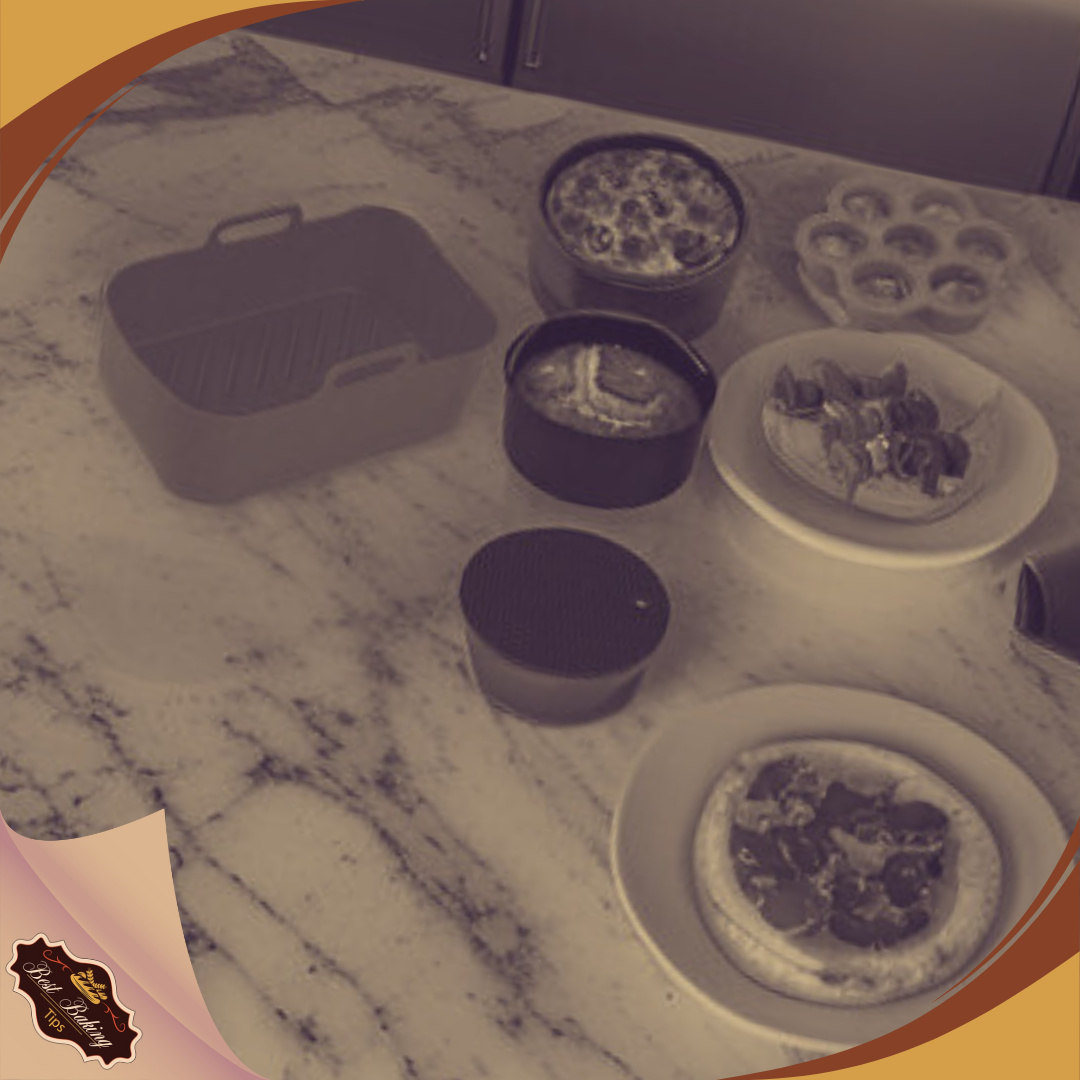
Silicone bakeware proves to be a reliable companion for air fryer enthusiasts. Its high heat resistance and non-toxic properties made it a safe choice for use in air fryers. Throughout the article, we explored its benefits, including durability, non-stick qualities, and ease of cleaning. We delved into considerations such as temperature tolerance and size compatibility, ensuring optimal cooking results. With its ability to withstand the rigors of air frying while enhancing cooking convenience, silicone bakeware emerges not only as a safe option but also a practical one. So, for those looking to streamline their air frying experience, silicone bakeware is indeed worth considering.
Frequently Asked Questions

In exploring the safe use of silicone bakeware in air fryers, it’s important to address common concerns. This includes understanding the compatibility of silicone with various air fryer models, recognizing necessary precautions, and knowing the health implications.
Can silicone bakeware be safely utilized in all models of air fryers?
Silicone bakeware can be used in air fryers provided it is food-grade and designed to withstand high temperatures.
However, it’s crucial to confirm with the air fryer’s manufacturer regarding compatibility with silicone accessories.
What precautions should be taken when using silicone bakeware in an air fryer?
When using silicone bakeware in an air fryer, one should ensure it does not touch the heating element.
Additionally, one must always check that the silicone is labeled as oven-safe and follows the guidelines for high-temperature use.
Is there a temperature limit for using silicone bakeware in an air fryer?
Most silicone bakeware can tolerate temperatures up to 440℉ or more.
Since many air fryers operate at or below this temperature range, silicone is generally safe to use. It is important that one refers to the specifications of the particular silicone product for temperature limits.
What are the health implications of using silicone air fryer liners?
High-quality, food-grade silicone is generally considered safe and does not contain harmful chemicals like BPA.
To minimize health risks, it is advised to use only silicone that is specifically rated for cooking use in high-heat environments.
How does silicone bakeware compare to parchment paper in terms of safety and effectiveness in air fryers?
Silicone bakeware is reusable and can withstand higher temperatures in comparison to parchment paper, which can brown or burn if not used within its safe temperature range.
Silicone also provides a non-stick surface, making it effective for baking and easy clean-up.
Are there specific types of silicone bakeware that should not be used in air fryers?
Poor quality silicone bakeware or those not rated for high temperatures should not be used in air fryers.
Only use silicone that is labeled as safe for use in ovens or high-heat conditions to ensure safety and avoid any potential melting or degradation.
Connect with Us for Vegan Baking Bliss!
Looking for mouthwatering vegan baking inspiration?
Want to stay updated on the latest baking tools and trends? Look no further! Connect with us on Facebook, Instagram, Pinterest, Twitter, and TikTok for engaging content, insightful product reviews, and to join a community passionate about vegan baking and baking tools. Don’t miss out on the fun – follow us today!

